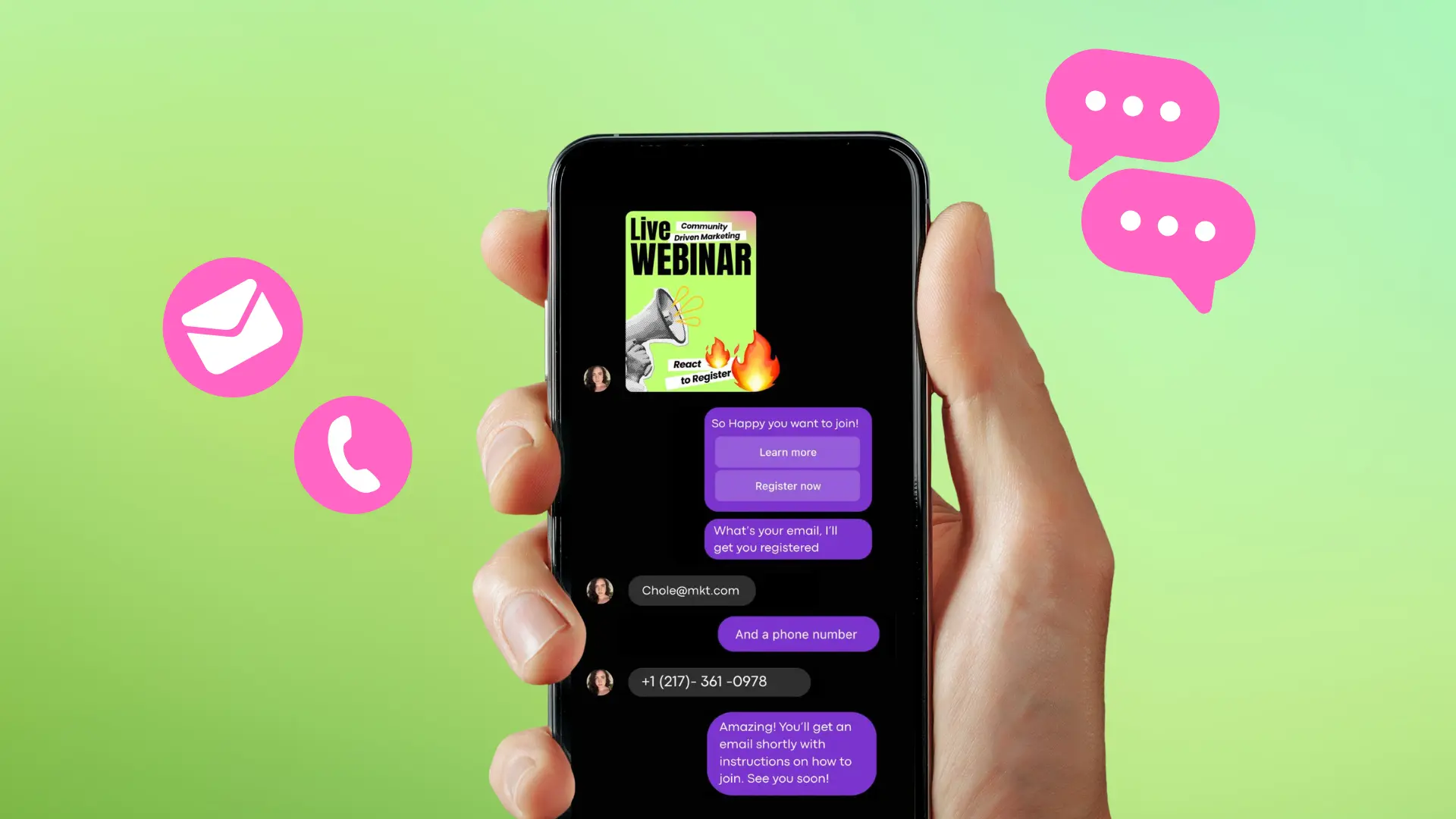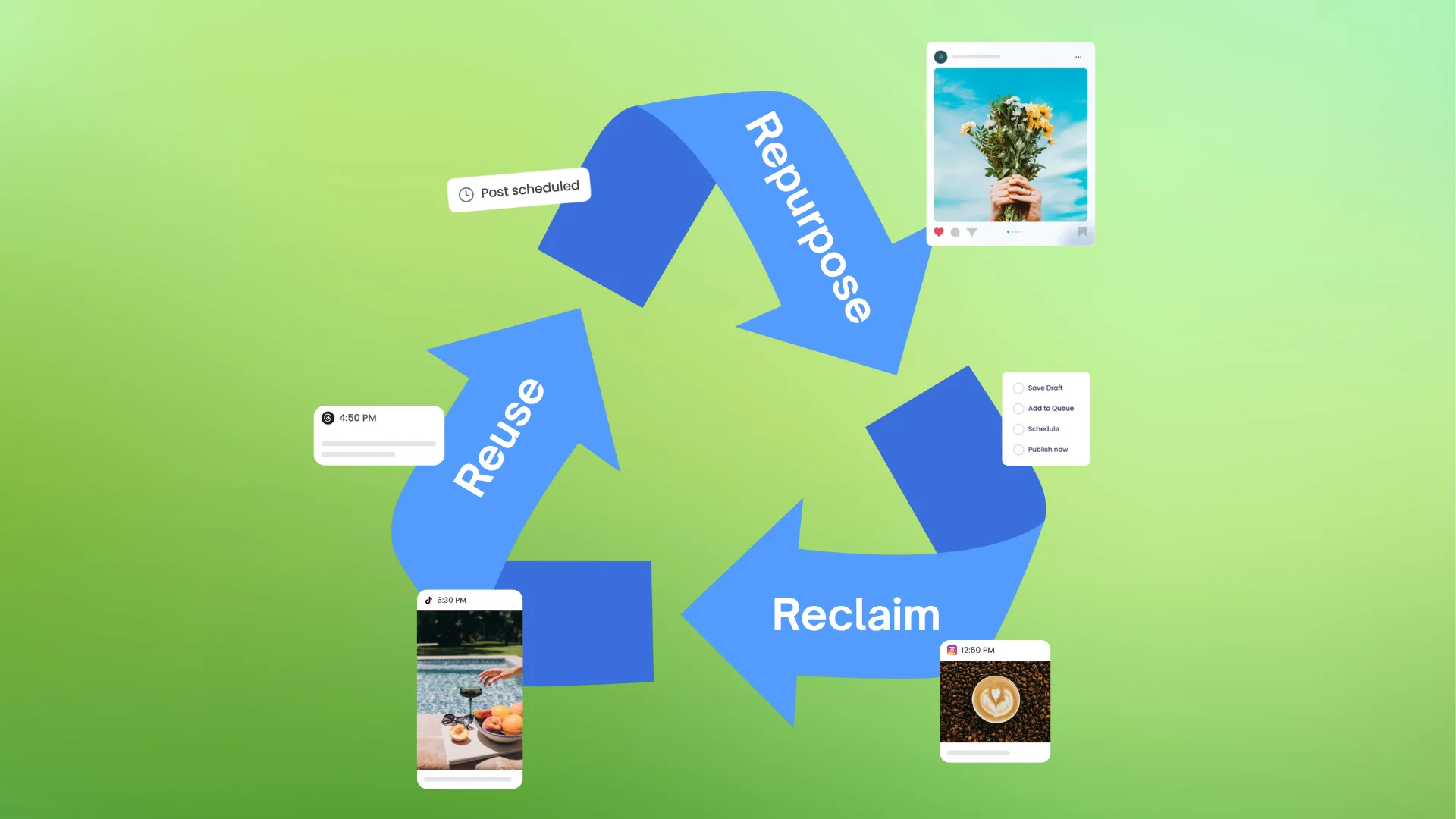New

Turn Your DMs Into Lead Gen!
Learn how to collect lead data from your DMs such as email addresses, phone numbers, and more right from your social inbox. If you are not yet automating your DMs your competitors are outpacing you.

How Something Social Saved 75% of Their Time and Increased Revenue by 15%
See how a fast-growing agency improved operations, cut down hours of manual work, and unlocked new revenue opportunities with Vista Social.
New

50 Unique Social Media Ideas for Consistent Content Creation
Discover 50 unique social media post ideas to engage your audience, grow your brand, and maintain a consistent content strategy with ease!

Mastering Content Reuse: The Key to a Consistent and Sustainable Posting Strategy
Published on September 18, 2024
10 min to read
Employee Advocacy Guidelines Worth Following This 2024
Summarize with AI


Table of Content

You need clear guidelines to align your employee advocacy program.
Having your team advocate for your brand gives more authenticity to your brand’s message while expanding your reach on social media.
But without the right strategy, your employee advocacy program can feel forced—or worse, fail to resonate with your target audience.
That is why following the right employee advocacy guidelines is crucial.
The guidelines provide direction, clarity, and dos and don’ts for keeping all your employee advocacy content and strategies aligned with your brand and goals.
Hop in as we explore the guidelines to help you run your employee advocacy program effectively.
Table of contents
What you will learn
- What are the benefits of employee advocacy guidelines?
- What are the essential employee advocacy guidelines to follow?
- What is the best platform for implementing your employee advocacy program?
- What are the common mistakes to avoid when developing employee advocacy guidelines?
- What are the employee advocacy guidelines FAQs?
- Ready to launch solid employee advocacy guidelines?
What are the benefits of employee advocacy guidelines?
Following a clear set of employee advocacy guidelines offers the following perks.
[Must read: Top Employee Advocacy Guide: w/ Tips, Tools, & Programs]
- Message consistency. Clear guidelines help your advocates stay on-brand, ensuring that they represent your brand’s values and voice across all content they share for the program
- Reduced risk. Following rules helps your business avoid potential PR crises. It helps ensure that your advocates don’t accidentally post content on sensitive company details or anything inappropriate
- Better efficiency. Well-developed employee advocacy guidelines help your advocates know the content they should post and when. It saves them from hours of guessing what to post
- Ensure authenticity. Clear guidelines help your employees advocate for your brand properly, making their posts feel more genuine and credible to audiences
- Empower your employees. Guidelines equip your advocates with the guidance and tools necessary to be strong brand ambassadors while helping them connect better with your company’s mission
- Increased engagement. Well-informed and confident advocates can post employee advocacy posts more effectively. It can help raise awareness for your brand and boost engagement
What are the essential employee advocacy guidelines to follow?
The components of your employee advocacy guidelines can depend on your program’s goals, target audience, industry, and more.
However, your guidelines should include critical aspects to ensure effective and efficient implementation, management, and strategy development.
[Must read: Key Employee Advocacy Strategy That Boosts Brand Visibility]
Consider the following components.
1. Program goals
Include measurable objectives in your employee advocacy plan and guidelines. This will simplify tracking and assessing the performance of your advocates and program.
[Must read: How to Build an Employee Advocacy Plan: Step-by-Step Guide]
For example, your goals can be:
- Boosting brand awareness
- Strengthening the positive perception of your company
- Generating qualified leads
Setting goals gives your advocates a clear purpose and direction, ensuring their efforts effectively implement your program and contribute to your company’s overall vision.
3. Participation criteria
Not all your employees may be the right advocates for your advocacy program.
That is why you must provide specific eligibility criteria to ensure only the best-fitting advocates participate in your program.
Consider your potential advocate’s role, sentiments about your company, tenure, and social media activity and engagement.
Specific criteria help ensure that your participants align with your brand’s voice and will genuinely advocate for your company.
4. Approved content and message
Maintain a consistent brand image by giving your advocates critical messaging points to highlight or incorporate into your advocacy posts and activities.
The vetted key points and messaging should empower your employees to represent your brand confidently without sounding like they’re reading off a script.
You can provide a list of your company’s key messaging points through a shared document that advocates can easily access and reference.
5. Specific social media platforms
Specify the social media platforms your advocates should use for your employee advocacy program.
Include information on the type of content your advocate can share for each platform.
For example, content about professional insights is best for LinkedIn, while showcasing your company’s culture through a short, fun video can be more suitable for Instagram or TikTok.
Specifying social networks helps ensure that your advocates post the right content on platforms where their voices will have the most impact.
6. Content publishing guidelines
Set clear rules on what, when, and how your participating employees should post social media content.
Include guidelines on the relevant hashtags, visual content, and tone that align with your specific campaigns or program and brand identity.
Leverage the social media management platform Vista Social.
The platform offers tools to help with keeping your advocacy posts on-brand.
For instance, the AI Assistant can generate and refine social media post captions based on your brand voice.
Share other relevant information, such as your social media guidelines, to ensure consistency and alignment across your employee advocacy posts and activities.
Providing clear content posting guidelines helps prevent potential mishaps, keeping your content on-brand and aligned with your social media strategy.
It also ensures that the right people see your advocacy posts at the right time for maximum engagement.
7. Branding standards
Ensure that your employees’ advocacy posts represent your brand identity properly.
Include guidelines on using your company’s colors, logo (and its versions), taglines, and other branding elements.
Providing standards for using your branding elements ensures your advocates know how to incorporate them into your posts and maintain a cohesive online presence.
8. Disclosure requirements
Exercise transparency across your advocacy posts by ensuring advocates disclose that they work for your company in work-related posts.
Doing so makes your brand more credible and trustworthy to audiences and adds authenticity to your employee advocacy content.
It helps build trust with your audience while protecting your brand’s reputation.
Also, ensure that all your employee advocacy program’s disclosure requirements meet local regulations for transparency and compliance.
This includes social media platform community guidelines and other requirements, such as those of the Fair Trade Commission (FTC).
9. Employee conduct standards
Set clear expectations for how your employees should behave, communicate, and interact with audiences online or in other activities representing your company.
Your guidelines should include rules about keeping confidential information out of their posts.
Specify the topics they should avoid, such as personal attacks, hateful speech, and sensitive issues.
10. Content approval process
Implement a thorough content approval process to ensure your employees’ advocacy posts are always on point and on brand.
It allows you to review your advocates’ posts before they go live, giving you more control over your content.
The process also lets you check whether the posts align with your messaging, brand, and guidelines before sharing them with your audience.
With Vista Social, you can use the post approval workflow to automate sending your advocacy posts for review and approval before publishing.
You can create the post using the platform’s social media publishing feature and create your automated workflow for an efficient content approval process.
Try Vista Social for Free
A social media management platform that actually helps you grow with easy-to-use content planning, scheduling, engagement and analytics tools.
Get Started Now11. Tracking and reporting methods
Set a system or process to monitor your advocacy program and advocates’ performances.
Determine the key metrics to measure success effectively.
Some of the crucial metrics you can track include the following:
- Engagement. Monitor comments, shares, mentions, and likes to determine how audiences interact with your advocacy posts
- Reach. Track the number of people, including new audiences, that your advocacy posts reach on social media
- Click-Through Rate (CTR). Determine the number of people who click on the links within your advocacy posts. A high CTR can indicate interest in your employees’ advocacy content
- Shares by advocates. Analyze how often your advocates post your advocacy content to determine their involvement and how actively they participate in your program
- Lead generation. Assess how many leads your advocates’ posts generate through specific campaigns and trackable links
- Conversion rate. Monitor the number of interactions and links on your advocacy posts that lead to conversions, whether through sign-ups, sales, or other conversion actions
- Traffic source. Track the website traffic from your advocacy posts or employee-shared content. It can tell you whether your advocacy program contributes to your overall marketing efforts or specific campaigns
- Brand mentions. Measure the increase in your brand mentions through your employee advocacy posts. A rising number can show that your program is helping grow your brand awareness. Leverage Vista Social’s social media listening tool to monitor, manage, and gain insights into mentions of your brand and relevant keywords
Use the data and insights to help adjust and optimize your content, program, and advocates’ performance accordingly.
12. Support and training
Specify the resources and tools in your guidelines to help your employees implement your advocacy program effectively and efficiently.
Include the processes and methods, such as online resources, training sessions, and templates, to equip your advocates with the necessary skills and knowledge to represent your brand effectively on social media.
13. Recognition and incentives
Motivate your employees to participate actively in your advocacy program by offering rewards and other incentives.
Specify the types of recognition and rewards your advocates can receive in your guidelines, including the following.
- Gift cards. Reward top-performing advocates with gift cards for popular stores, restaurants, and other services
- Cash bonuses. Consider giving monetary bonuses to advocates who meet your specific advocacy program targets or milestones
- Public recognition. Feature your top-performing advocates in your internal meetings, social media posts, email newsletters, and other channels to recognize their efforts and achievements
- Paid time off. Reward extra vacation days (or half-days) to show appreciation to actively participating employees
- Professional development. Provide free access to online certifications or courses that help your participating employees hone their skills or advance their careers with your company
Recognizing and rewarding your advocates’ efforts can motivate your employees to connect better and deeper with your brand, potentially leading to long-term advocacy.
14. Reporting and feedback process
Provide a confidential and safe way for your employees to report guideline violations or share concerns and feedback.
Your guidelines should include a clear reporting process to address issues promptly and maintain the integrity of your employee advocacy program.
Also, implement methods for your advocates to share their feedback and use the information to refine your employee advocacy program.
What is the best platform for implementing your employee advocacy program?
If you’re looking for a powerful all-in-one tool that offers a suite of social media management features and employee advocacy tools, look no further than Vista Social.
[Must read: Top Employee Advocacy Tools to Improve Brand Reach this 2024]
The platform offers essential and advanced features.
It has social media engagement management, post scheduling, analytic, and dedicated employee advocacy tools.
The platform’s employee advocacy feature lets you easily connect your social media profiles and create your program.

Once your program is up, you can invite your advocates by uploading a CSV file or manually entering their names and email addresses.

Your employee advocacy dashboard shows an overview of your program’s performance based on key metrics and published advocacy content.

It also includes your program activities, a leaderboard to track top contributors, and current advocates for easy management.

Creating your advocacy posts is a breeze with Vista Social.
Start by selecting your advocacy post option: New social post, existing social post, or Advocacy-only post.

Next, create and customize your advocacy post accordingly.

Use the AI Assistant to generate or refine your advocacy post captions and taglines.
You can switch on the Advocacy post toggle and set a schedule to make it available for advocates to share.

The best part is that your advocates can like, comment on, share, and customize the post in their unique voices to give it a fun twist and more authenticity.
Your published advocacy posts are displayed on your Advocacy dashboard.

With Vista Social, you manage everything in one place, from your social media management workflows to your employee advocacy programs.
Don’t miss out on Vista Social’s other core features, such as a link in bio tool with customizable landing pages called Vista Page.
What are the common mistakes to avoid when developing employee advocacy guidelines?
Understand the common pitfalls below to create strong employee advocacy guidelines.
- Lack of clarity. Confusing and vague guidelines can leave your advocates unsure of the content they should post. It can cause them to hesitate to engage with audiences and result in inconsistent messaging
- Being too restrictive. Guidelines are necessary, but they shouldn’t be overly rigid that they stifle your advocates’ creativity, which can discourage them from participating
- Not providing support or training. Never assume that your employees know how to advocate for your brand properly. Provide training and resources to ensure effective and on-brand advocacy content
- Not incorporating personal branding. When advocates are not allowed to express their unique voices and styles, advocacy posts can feel forced or too scripted. Balance a healthy mix of personal and company branding in your advocacy posts to ensure they properly represent your brand while allowing your employees creative freedom
- Not providing incentives or rewards. Employees may not get the motivation to participate in your advocacy program without recognition or rewards
- Not aligning your program objectives with your company goals. Failing to tie back your program goals with your brand’s objectives can lead to a lack of focus and impact
- Not customizing by role or department. Your advocates can have various functions in your company, making one-size-fits-all employee advocacy guidelines ineffective. Consider tailoring your guidelines based on your employees’ roles, especially for executive and customer-facing employees
- Failing to update your guidelines regularly. Social media platforms and trends constantly shift, leaving your employee advocacy guidelines outdated. Regularly review and update your guidelines to keep your program relevant
- Overlooking global and cultural differences. If your company operates internationally, failing to adjust your program and strategies based on various cultures can make your employee advocacy guidelines less effective or, worse, problematic
- Lack of engagement from company leaders. If your company’s top-level leaders don’t support or have no involvement with your advocacy program, your employees may not take their efforts seriously, reducing participation and effectiveness
What are the employee advocacy guidelines FAQs?
What is an example of employee advocacy?
Employee advocacy programs can take various forms.
For instance, your advocacy post can include information, an image showing your employee working on your company’s latest project, and a link to your website.
It can be a great advocacy post to help your company attract potential hires and new talent.
[Must read: 3 Employee Advocacy Program Examples Worth Following]
Why is employee advocacy a cost effective solution for brands?
Employee advocacy helps your company attract new customers and reach a wider audience through social media.
It can also minimize the need to run paid social media ads while boosting employee satisfaction and engagement.
What are the main effects of running employee advocacy programs?
Employee advocacy can increase your sales and amplify your social media marketing efforts. It can also simplify attracting qualified candidates and talents.
Ready to launch solid employee advocacy guidelines?
Guidelines are crucial for giving your employee advocacy efforts direction and focus.
It also helps ensure your advocates’ social media posts, interactions, and activities align with your brand and messaging.
Plan and develop your guidelines carefully.
Use the right tool to implement your employee advocacy program seamlessly and drive excellent results.
Vista Social provides a one-stop shop for your company’s social media management and employee advocacy program needs.
About the Author
Content Writer
Jimmy Rodela is a social media and content marketing consultant with over 9 years of experience, with work appearing on sites such as Business.com, Yahoo, SEMRush, and SearchEnginePeople. He specializes in social media, content marketing, SaaS, small business strategy, marketing automation, and content development.
Read with AI
Save time reading this article using your favorite AI tool
Summarize with AI
Never Miss a Trend
Our newsletter is packed with the hottest posts and latest news in social media.

You have many things to do.
Let us help you with social media.
Use our free plan to build momentum for your social media presence.
Or skip ahead and try our paid plan to scale your social media efforts.
P.S. It will be a piece of cake 🍰 with Vista Social
Subscribe to our Newsletter!
To stay updated on the latest and greatest Social Media news. We promise not to spam you!


